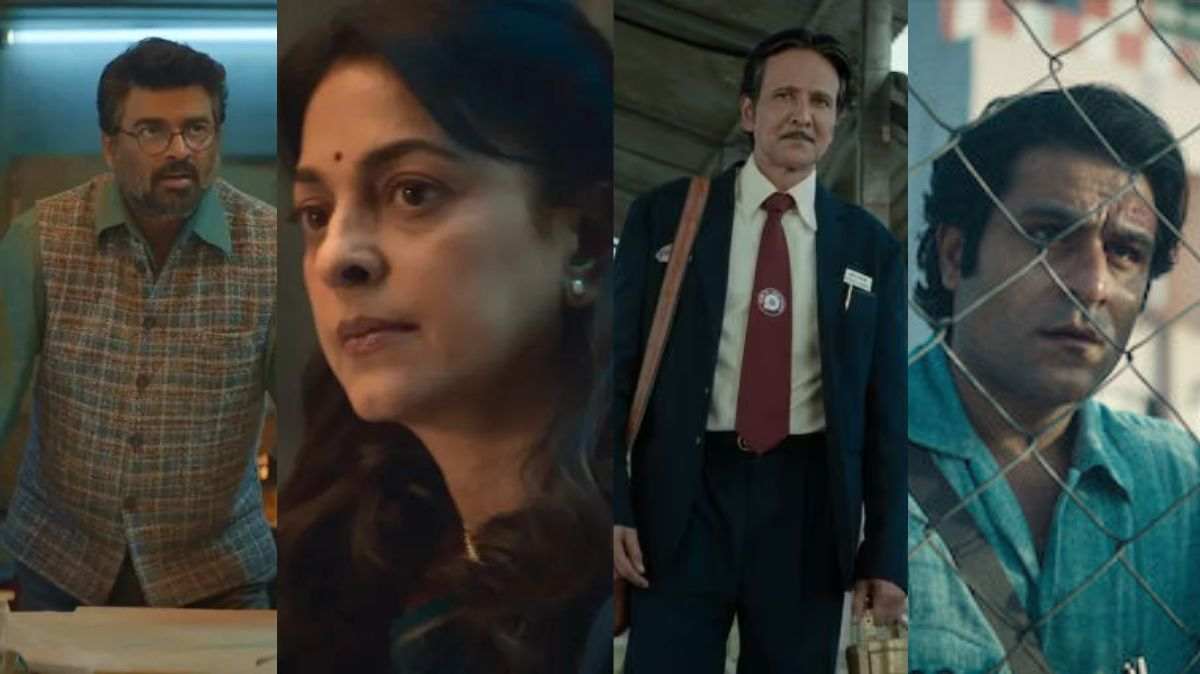The Bhopal gas tragedy of 1984 remains a haunting chapter in India’s history, etched with human suffering and bureaucratic failure. As depicted in the Netflix Hindi series, ‘The Railway Men,’ this catastrophic event unfolds through multiple perspectives, focusing on railway employees like Stationmaster Iftekaar Siddiqui and GM Rati Pandey, while also shedding light on the intricate governmental complexities through characters like Rajeshwari Janglay. While the show weaves a narrative rooted in historical significance, it’s essential to discern the intersection of fiction and reality within its portrayal.
Rati Pandey’s Character: Fictional Threads in a Real Tapestry
Rati Pandey, portrayed by R. Madhavan, symbolizes courage and resourcefulness during the tragedy. However, he’s a product of creative liberty, a composite character crafted for the narrative’s purpose. Although Pandey’s actions in dispatching relief teams echo the real-life efforts of railway workers stationed in Itarsi, historical accuracy doesn’t tether his character entirely to a specific individual. Instances mirrored from reality, like the proactive railway response from Itarsi or the resemblance to Gauri Shankar’s role, suggest inspirations drawn from genuine events. Director Shiv Rawail and screenwriter Aayush Gupta possibly amalgamated these real stories to create a compelling fictional character in Rati Pandey, embodying the essence of collective efforts during the tragedy.
Rajeshwari Janglay’s Narrative: Merging Fiction with Political Realities
Similarly, Rajeshwari Janglay’s character serves as a conduit to showcase the bureaucratic hurdles and political maneuvering amid the catastrophe. While her role underscores the hesitancy and hidden agendas within governmental responses, her portrayal mostly aligns with the fiction woven into the storyline. The narrative encapsulates the government’s controversial handling of the crisis, reflecting on alleged attempts to suppress information about the gas leak and subsequent cover-up narratives. However, direct correlations to specific incidents remain elusive, emphasizing Janglay’s character as a fictional representation embedded within a larger context of governmental opacity.
Jagmohan Kumawat: A Portrayal Rooted in Reality
Contrastingly, Jagmohan Kumawat’s character, portrayed by Sunny Hinduja, finds its basis in the real-life journalist Rajkumar Keswani. Keswani’s prescient warnings about the Union Carbide plant’s safety negligence, prompted by his friend Mohammad Ashraf’s (Mohammed Ansari in the series) tragic death due to a gas leak, echoed three years before the actual disaster struck. Keswani’s relentless investigative efforts and subsequent struggles to draw attention to the imminent danger posed by the company’s negligence mirror the character portrayed in ‘The Railway Men.’ While Keswani received recognition post-tragedy, his earlier efforts, unfortunately, went unheeded, revealing a poignant reality of whistleblowing and its aftermath.
Station Master’s Heroism: Merging Fiction with Real Valor
Stationmaster Iftekaar Siddiqui, embodying Ghulam Dastagir’s persona, showcases a tale of unmatched valor amidst adversity. Dastagir’s resolute dedication to his duties, diverting trains and risking his life to save others during the gas leak, paints a portrait of unwavering bravery. In reality, Dastagir’s heroic efforts, which tragically led to his son’s demise and exposed him to the lethal gas, underscore the sacrifices made by individuals during the catastrophe. His eventual health deterioration due to gas exposure stands as a somber testament to his courage and selflessness.
Accountability and Justice: Fallout of Tragedy
The blame for the Bhopal gas leak catastrophe rests upon the management’s negligence at Union Carbide India Limited, exacerbated by the lack of safety protocols and disregard for employee welfare. Warren Anderson’s evasion of accountability reflects the systemic failures that denied justice to the victims. Despite global outrage, Anderson’s escape from prosecution epitomizes the unequal scales of justice. His passing without facing consequences highlights the unresolved wounds and the persistent quest for accountability, a glaring scar on the tragedy’s aftermath.
‘The Railway Men’ intricately weaves fact and fiction, presenting a mosaic of human resilience, bureaucratic inadequacies, and systemic failings during the Bhopal Tragedy. While certain characters find grounding in historical realities, others serve as amalgamations to represent broader themes. The series’ portrayal serves as a reminder of the irrevocable tragedy’s lasting impact and the ongoing pursuit of accountability and justice for the victims. Through a fictional lens, it illuminates the valiant efforts of individuals and the systemic flaws that perpetuated one of history’s most catastrophic industrial disasters, leaving an indelible mark on the collective memory of a nation.











